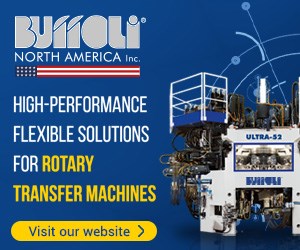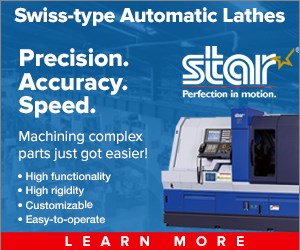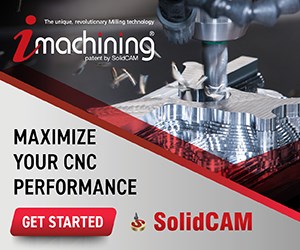The Rotary Transfer Advantage
The multi-station functionality of a rotary transfer machine allows it to take advantage of the productivity benefits of a single setup, as with each index of the rotary table, a part is completed.
The multi-station functionality of a rotary transfer machine allows it to take advantage of the productivity benefits of a single setup, as with each index of the rotary table, a part is completed. This simultaneous machining is possible because each workstation is dedicated to a specific operation, and, by the time a part has moved around the entire table, it comes off complete. And as lot sizes decrease, CNC technology has provided more flexibility for change-over from one job to another.
Multi-station horizontal table machines process bar fed or chucked blanks held in collets or chucks around the periphery of the indexing table. Machining modules mounted in an end-feed or cross feed orientation provide the machining action to the usually stationary workpieces.
A trunnion-type design is used for high production of parts of rotation. It uses an indexing wheel mounted in a vertical orientation (like a Ferris wheel) with grippers located around the periphery. These grippers hold the workpiece blank in the center while tool stations from the headstock and tailstock ends of the machine attack both ends of the blank at once. Cross-slide operations can be performed using machining modules mounted perpendicular to the workpiece axis.
The article “Changing Your Comfort Zone” takes us into a shop that took the technological leap from cold heading machines to high volume rotary transfer production. See how the company uses its Hydromat Epic 16-station bar-loaded rotary transfers to meet the production volumes necessary for its automotive customers.
Related Content
-
Edge Technologies Bar Feeder Provides Optimal Stock Support
The FMB Turbo RS 4-45 bar feeder provides reduced vibration, a boost to maximum rpm, better surface finishes and the ability to hold tighter tolerances.
-
Moen’s Flowing Success with Rotary Transfer Technology
The popular faucet manufacturer has adopted new CNC rotary transfer equipment to produce valves for its new generation of Widespread faucets.
-
Independent Turning Cell Enables High Concentricity Precision
PMTS 2023: The RV 10 Flexmaster rotary transfer machine’s precision turning cell (PTC) is integrated in the machine as a disconnected turning cell and is free of the drive and machining factors that affect the other stations.








.jpg;maxWidth=300;quality=90)




